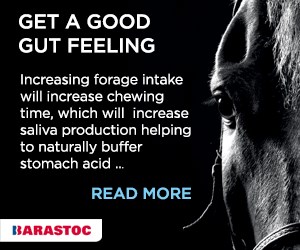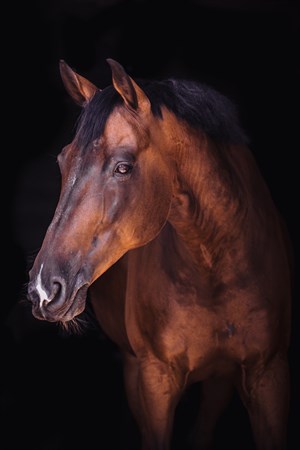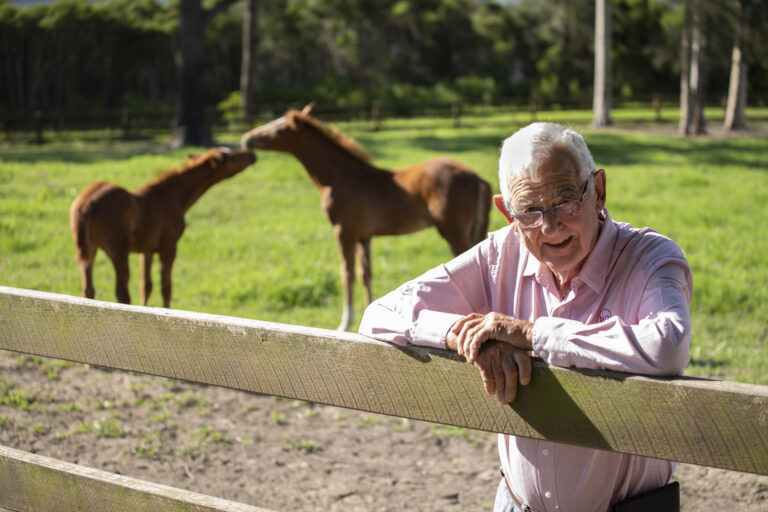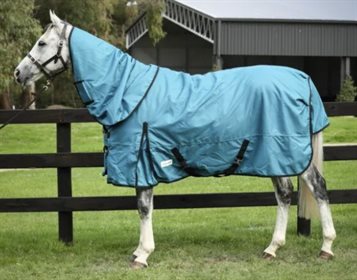Gastric ulcers can affect all types of horses, including pleasure horses, broodmares and foals
© sarabesacon
Written in conjunction with Barastoc Horse
Gastric ulcers can affect any type of horse, from performance horses to foals and broodmares. It’s a problematic condition for animals and their owners alike; gastric ulcers not only cause significant discomfort, reduced performance and ill thrift in horses, treating the condition can be an expensive and lengthy process.
As the saying goes, prevention is better than cure. Adopting the right feeding and management practices – and knowing the risk factors – will limit the likelihood of ulcers developing.

Horses’ stomachs are small and continuously secrete acid during the process of digesting food. The equine gastric system has evolved to operate at its best when the horse has constant access to free range grazing. As most pleasure and performance horses do not have constant access to grass or hay, they are at risk of developing non-glandular ulcers. Hay and pasture form a physical barrier in the stomach – and saliva produced during chewing plays a key role in buffering gastric acid – in the absence of these factors, acid can splash against the stomach’s delicate lining, causing ulcers particularly during exercise.
With this in mind, one of the best ways to prevent ulcers forming is to provide as much turnout time as possible with access to quality pasture. If this is not possible, or if your horse is prone to conditions such as laminitis, providing forage on an ad-lib basis, a horse should be fed at a minimum 1.5% of their bodyweight daily in the form of fibrous matter, such as hay. Using slow hay feeders or nets can be beneficial for horses and ponies that consume hay quickly. Avoid feeding straw as the sole forage source.
Microbial disruption due to incorrect feeding is another cause of gastric ulcers, as this can lead to infection and ulceration both in the stomach wall and the gastrointestinal tract. Feeds high in sugar and starch can increase the risk of ulcer formation, whereas those with a high soluble fibre and low soluble sugar content can minimise the risk of ulcer formation. If sourcing sufficient quantities of quality hay and chaff is not possible, alternative fibre sources such as Speedi-beet and Fibre-beet are recommended. These products are both rich in pectins, which have been shown through clinical trials to form a gel at high levels of acidity, that can strengthen and thicken the stomach mucin layer. In addition, these products have high acid binding capacity, meaning they can soak up excess stomach acid and help maintain the stomach at the correct level of acidity. Being fibrous in nature, they are also well-chewed by the horse, aiding in saliva production to assist as a buffering acid.

Good management practices such as always providing access to fresh clean water and minimising stress are particularly relevant for the prevention of ulcers. Particular care should be taken when managing ridden horses, as exercise increases the splashing of acid. As such, it is important to avoid exercising horses when their stomach is empty; feeding a horse Lucerne chaff/ hay prior to exercise is recommended.
If your horse displays symptoms such as poor performance, reduced appetite, some weight loss, girthiness, irritable behaviour, reluctance to exercise or a dull coat, he or she may have existing gastric ulcers and it is recommended that a vet is consulted for diagnosis and treatment.
Barastoc are making it their mission to help improve horses’ suffering stomachs. Check out their resources to help you with Gastric Ulcer Prevention.
READ THE LATEST NEWS ARTICLES HERE









